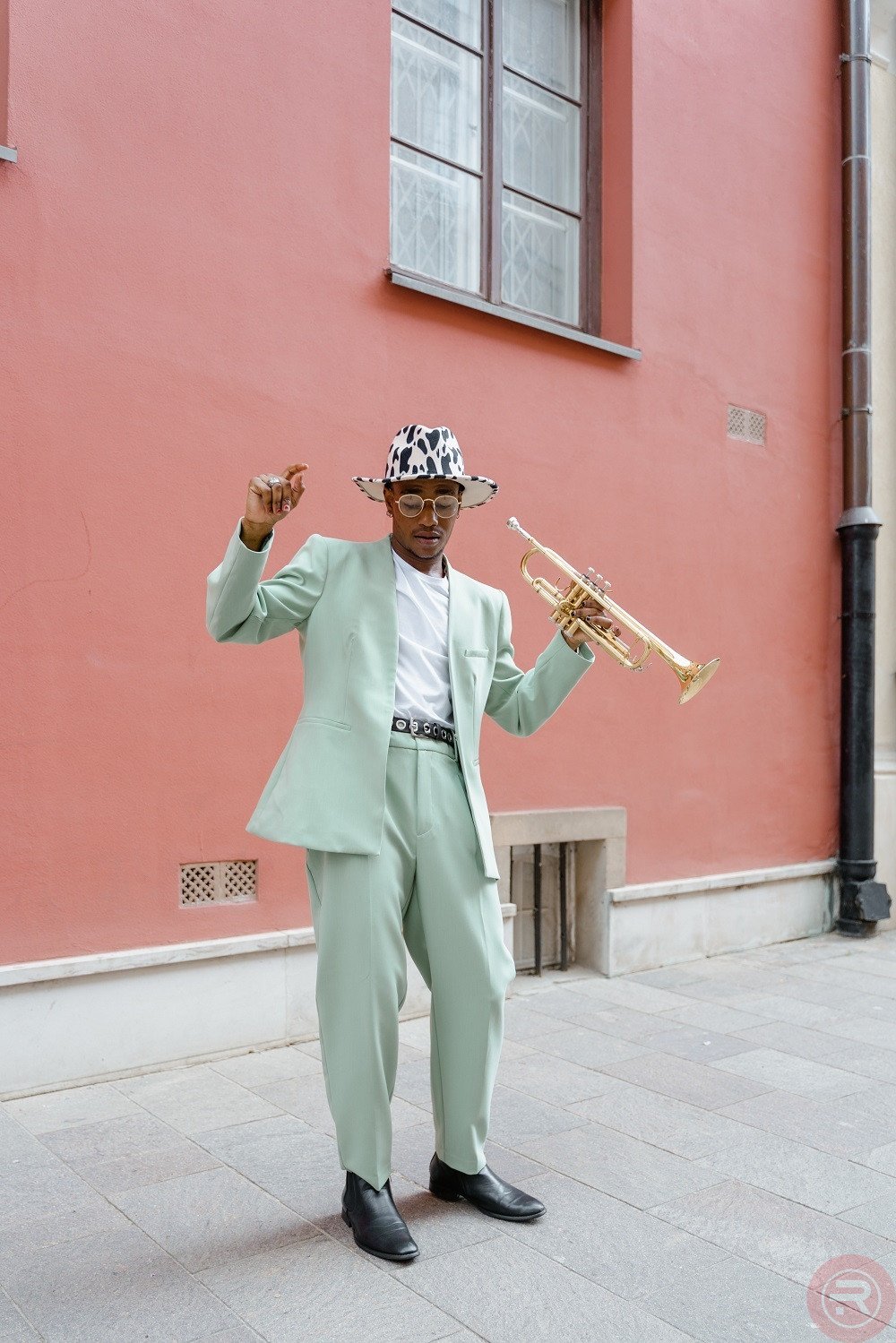Articles
“Why might a woman stop singing after she gets married?”

“Why might a woman stop singing after she gets married?”
There’s no universal rule that women stop singing once they get married. However, there might be social, cultural, or personal reasons that might influence a woman’s decision to sing less or stop singing after marriage. Here are some potential factors:
- Cultural or Religious Beliefs: In some cultures or religious contexts, there might be a belief that married women should not perform in public or maintain a public presence, which might include singing.
- Family Obligations: After marriage, many women take on new roles and responsibilities, such as becoming a mother or taking care of a household. These increased responsibilities might not leave them with much time or energy to pursue singing.
- Shift in Priorities: Some individuals might voluntarily decide to focus more on their personal lives after marriage, putting hobbies or even careers on hold.
- Partner’s Beliefs or Preferences: In some cases, a partner might not be supportive of their spouse’s singing career or hobby, which could lead the individual to sing less or stop singing.
- Economic Reasons: Maintaining a career in music or singing can be financially unstable. After marriage, the need for a stable income might become a priority, leading one to take on a more consistent job.
- Lack of Support: In some cases, the societal expectation that married women should prioritize their family over personal interests might lead to a lack of support from family or the community when they wish to continue singing.
- Personal Choice: Some might choose to stop singing due to a change in personal interests or because they feel fulfilled in other aspects of life.
- Voice Changes: While not directly related to marriage, some people experience voice changes as they age, which can impact their confidence or ability to sing.
It’s essential to note that these are just potential reasons, and they won’t apply to everyone. Many women continue to sing and even have thriving music careers after marriage. Each individual’s decision regarding singing after marriage is deeply personal and influenced by a combination of factors.
Articles
Embracing a Brighter Future for Nigeria

Section 1: Reflecting on our Collective Strength
In these pivotal moments for our beloved country, Nigeria, it is important to stay optimistic and hopeful. Despite the challenges we face, it is crucial to remember that our collective strength lies in our unity. We have the power to shape a brighter future for Nigeria, and it begins with embracing the potential within ourselves and our nation.
As we look towards the horizon, let us not be discouraged by the obstacles in our path. Instead, let us channel our love for Nigeria into fueling positive change. Together, we can overcome any adversity and build a prosperous nation that we can all be proud of.
Section 2: The Power of Hope and Unity
Hope is a driving force that can lead us to great accomplishments. It is what inspires us to dream big and believe in the possibilities that lie ahead. In these challenging times, hope becomes even more essential. It keeps us focused on our goals and motivates us to work towards a better future.
Furthermore, unity is a powerful tool that can transform nations. When we come together as one, we amplify our voices and increase our impact. By embracing our collective strength, we can foster a sense of belonging and create an environment where everyone’s talents and ideas are valued.
Section 3: A Call to Action
Now is the time for action. Let us harness the power of hope and unity to drive positive change in Nigeria. There are several ways we can contribute to building a brighter future:
- Engage in constructive dialogue: By engaging in open and respectful conversations, we can bridge divides and find common ground. Together, we can build understanding and work towards solutions.
- Support local businesses: By supporting local businesses, we can stimulate economic growth and create opportunities for job creation. This will contribute to the overall development of our nation.
- Participate in civic activities: Voting, volunteering, and actively participating in our communities are essential for a thriving democracy. By being actively engaged, we can shape the future of our nation.
Let us remember that change starts with each and every one of us. By embracing hope, unity, and taking action, we can build a brighter future for Nigeria.
Articles
Impact of Technology on Music

Impact of Technology on Music
The intersection of technology and music has been profound, reshaping everything from production and distribution to consumption and interaction. From the first phonographs to today’s digital streaming platforms, each technological leap has left an indelible mark on the musical landscape.
- Creation and Production
- Instruments: The evolution from acoustic to electric instruments, like the electric guitar, gave rise to entirely new genres like rock and roll. Synthesizers and drum machines further expanded the musical palette, leading to genres like techno and house.
- Recording Techniques: Multi-track recording allowed artists to overlay multiple sounds, leading to richer compositions. Digital Audio Workstations (DAWs) like Pro Tools and Ableton revolutionized music production, enabling artists to create intricate pieces from their bedrooms.
- Auto-Tune and Pitch Correction: Although controversial, tools like Auto-Tune have become ubiquitous in modern pop and hip-hop, allowing for pitch-perfect recordings.
- Distribution and Accessibility
- From Physical to Digital: The transition from vinyl records to cassettes to CDs allowed for more portability. The advent of the MP3 and online platforms like Napster and iTunes revolutionized how we purchase and listen to music, making it more accessible.
- Streaming Platforms: Services like Spotify, Apple Music, and SoundCloud have changed the game. Artists can now reach global audiences without traditional gatekeepers, like record labels.
- Music Videos: Platforms like YouTube have given artists a new medium to express their creativity and connect with fans.
- Consumption and Interaction
- Headphones and Personal Listening: The Walkman, followed by the iPod, transformed music from a communal experience to a deeply personal one.
- Music Discovery: Algorithms on streaming platforms curate playlists based on listener preferences, reshaping music discovery and promoting a more eclectic range of music.
- Virtual Concerts and Festivals: With advancements in Virtual Reality and the limitations imposed by global events like the COVID-19 pandemic, virtual concerts have emerged as a new frontier.
- Societal Impacts
- Piracy and Revenue: Digital formats made music piracy rampant, affecting industry revenues. While streaming platforms have combated piracy to some extent, they also brought new challenges regarding artist compensation.
- Globalization of Sound: Digital platforms have blurred geographical boundaries, leading to the global popularity of genres like K-pop, reggaeton, and Afrobeat.
- Fan Interactions: Social media platforms have brought artists and fans closer, enabling real-time interactions and building tighter fan communities.
- Future of Music and Technology
- Artificial Intelligence: AI is being used to compose music and could reshape the industry in unprecedented ways.
- Augmented Reality: AR can revolutionize live performances, adding an interactive layer to concerts.
In conclusion, technology has redefined music at every juncture. While purists may lament certain aspects of this evolution, it’s undeniable that technology has democratized music in many ways. It has made production more accessible, shattered geographical barriers, and transformed the very nature of musical interaction. As technology continues to evolve, it will be intriguing to see where it takes the world of music next.
Articles
Gospel Music and Fashion: A Harmonious Intersection

Gospel Music and Fashion: A Harmonious Intersection
Gospel music, with its deep-rooted traditions and soul-stirring melodies, is not just a genre—it’s an expression of faith, hope, and spiritual fervor. Fashion, on the other hand, is a visual and tactile manifestation of culture, identity, and personal expression. When the two intersect, they form a vibrant tapestry that tells a story of devotion, heritage, and the ever-evolving aesthetics of faith communities.
- Historical Interplay:
- Traditional Attire: In the early days of the gospel, attire was predominantly traditional, reflecting a sense of reverence and sanctity. Robes and conservative dresses were staples, underscoring the solemnity and sacredness of the message.
- The ‘Sunday Best’: As gospel music became integral to church services, especially in African-American communities, the idea of wearing one’s ‘Sunday Best’ became prominent. This not only highlighted respect for the sacred occasion but also became a cultural statement of pride and dignity.
- Gospel’s Evolution & Fashion’s Response:
- Contemporary Gospel and Urban Influence: As gospel music evolved, incorporating elements from R&B, jazz, and later hip-hop, the fashion associated with it began to shift. Urban streetwear, vibrant colours, and modern accessories started making appearances.
- Gospel Celebrities: Artists like Kirk Franklin, Yolanda Adams, and Mary Mary brought a touch of contemporary style to the gospel stage, merging current fashion trends with their spirited performances.
- Fashion as an Extension of Ministry:
- Symbolism and Statements: Fashion in the gospel realm often carries symbolic weight. Whether it’s a cross necklace, a scripture verse on a t-shirt, or colours that resonate with specific religious celebrations, these choices go beyond aesthetics—they’re extensions of the artist’s ministry.
- Modesty and Modernity: While many gospel artists maintain a degree of modesty in their fashion choices to honour traditional values, they’ve also found ways to infuse modern trends without compromising their beliefs.
- Global Influences:
- African and Caribbean Impact: Gospel music’s global reach has brought diverse fashion influences to the fore. Bright African prints, regal headwraps, and Caribbean-inspired attire have enriched the visual landscape of gospel events.
- Crossover Artists: As some gospel artists cross over to secular genres, and vice versa, they bring with them a fusion of styles that blur boundaries and challenge conventions.
- Festivals, Awards, and Red Carpets:
- Glamour and Glitz: Gospel music awards and festivals have become grand events where fashion plays a pivotal role. Red carpet looks, while maintaining the essence of the gospel’s reverence, often showcase the latest trends and designs.
- Fashion Collaborations: Some gospel artists have ventured into fashion, collaborating with designers or launching their own lines, further solidifying the bond between gospel and fashion.
In conclusion, gospel music and fashion are intertwined in a dance of tradition and innovation. Just as gospel has evolved over the decades, absorbing influences from various genres, the fashion associated with it has morphed, reflecting both the changing times and the timeless essence of faith. The result is a beautiful amalgamation of sound and sight, where spirit and style harmoniously coexist.
-
GUC3 weeks ago
Minister GUC ‘Your Presence’ Mp3 Download & Lyrics 2023
-
Music4 weeks ago
Chidiya Ohiagu ‘Already Blessed’ Latest Mp3 Download & Lyrics 2022
-
EP/Album3 weeks ago
Victor Thompson ‘Blessed’ (Full Album) Mp3 Download 2023
-
Music3 weeks ago
Ntokozo Mbambo ‘Jesus Christ Is Lord’Mp3 Download & Lyrics 2023
-
Music3 weeks ago
Steve Crown ‘Praise Medley’ Mp3 Download & Lyrics 2023
-
Music3 weeks ago
Terrian ‘Light It Up’ Mp3 Download & lyrics 2023
-
Music3 weeks ago
Steve Williz sings ‘Show Up’ Mp3 Download & Lyrics 2022
-
Music3 weeks ago
Keybone ‘I’d Give Everything’ Ft Dr Jazz Mp3 Download 2023


















